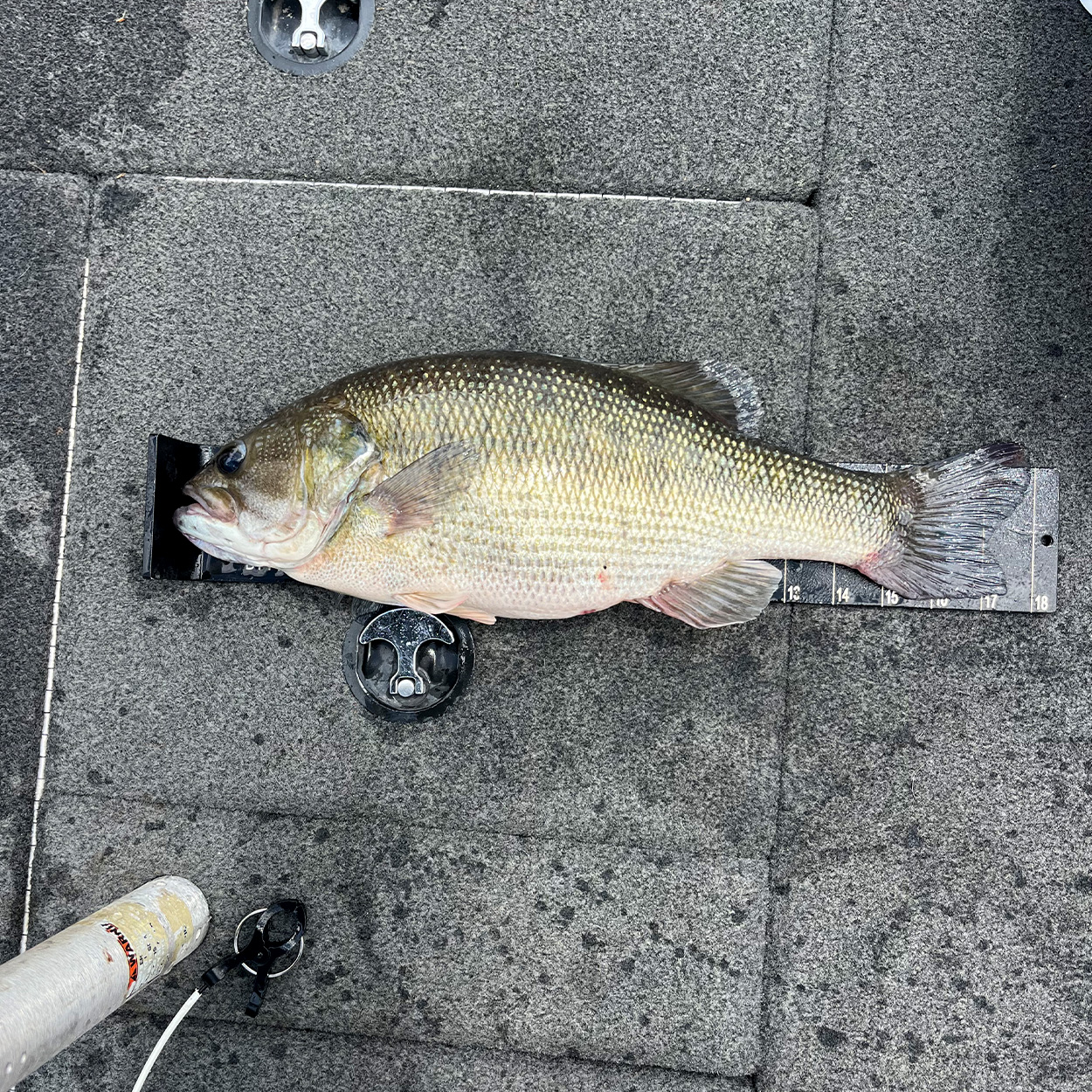The Fifth Annual Liberty County Bulldog Booster Bass Tournament got underway June 28 on Florida’s Apalachicola River. Tournament anglers Joe Durden and Wynn Fletcher launched Durden’s boat that morning, taking off from Bristol Landing along with the other competitors.
Fishing was tough until around mid-morning, when Durden spotted a small school of good-sized fish on his Garmin Livescope forward-facing sonar.
Read Next: 7 Forward Facing Sonar Tips: Settings, Mounting, and Techniques Explained
“There were four or five nice fish holding in a backwater slough out of the main current of river flow,” Durden tells Outdoor Life. “The mouth of the slough was about 12 feet deep. Inside the slough the bottom rose to 4 feet and then it dropped back off to 8 feet and that’s where the fish I marked on sonar were holding.”
The anglers made several casts toward the sonar marks of similar-size fish. On his third or fourth cast with a chartreuse-and-black Strike King KVD square bill crankbait, a fish hit Durden’s plug.
“The fish fought deep and tough, and I thought sure it was a catfish,” says Durden, 30, who works as a road inspector in Blountstown, Florida. “I got the fish up near the boat, and when it came up, I saw it was a bass, and it darted around the boat a good bit before Wynn could net it and put it in my Skeeter.”
The plug Durden was fishing had two treble hooks. One of the trebles hooked the bass on its outside cheek, so it fought doggedly against Durden’s bait-casting outfit.
“I knew right away it was potentially a state record,” says Durden. “It was the biggest spotted bass I ever saw, and in my boat, it weighed 3 pounds 14 ounces. I called a friend and learned the state record was smaller, so I knew I had to get it weighed on certified scales and checked by a state biologist to verify it was a spotted bass.”
The Apalachicola River also has largemouth bass and shoal black bass, and it takes a well-trained eye to differentiate one from the other. But as an experienced bass tournament angler, Durden knows a huge spot when he sees one, and they kept the bass in his live well for the rest of the competition.
The anglers didn’t place in the tourney, but after the weigh in, they arranged to meet with Florida Fish and Wildlife Conservation Commission officer Will Raker at a nearby farm in Bristol. A certified scale there showed Durden’s bass weighed 3.93 pounds. It measured 18.25 inches long. To verify that the fish was indeed a spotted bass and not another black bass species, FWC fisheries biologist Andy Strickland inspected the fish and took a fin clip.
Durden’s bass has since been officially certified as the new state record for the species. His fish breaks the previous Florida spotted bass record of 3.75 pounds, caught by Dow Gilmore on June 24, 1985. Gilmore’s fish also came from the Apalachicola.
Read Next: This State-Record Bass Won’t Make the Books Because Oregon Doesn’t Recognize It as a Game Fish
“Catching a state record fish is a tremendous accomplishment for any angler,” said Strickland. “Particularly a record that’s held the test of time for 40 years.”
Durden wanted to release his record bass. But because of the hot weather and the time it took to verify and weigh the fish, the bass didn’t survive.
“I will have a taxidermist [mount] that bass,” Durden says. “We didn’t do well in the tournament that day. But catching a state-record fish is better than a win anyway.”
Read the full article here





